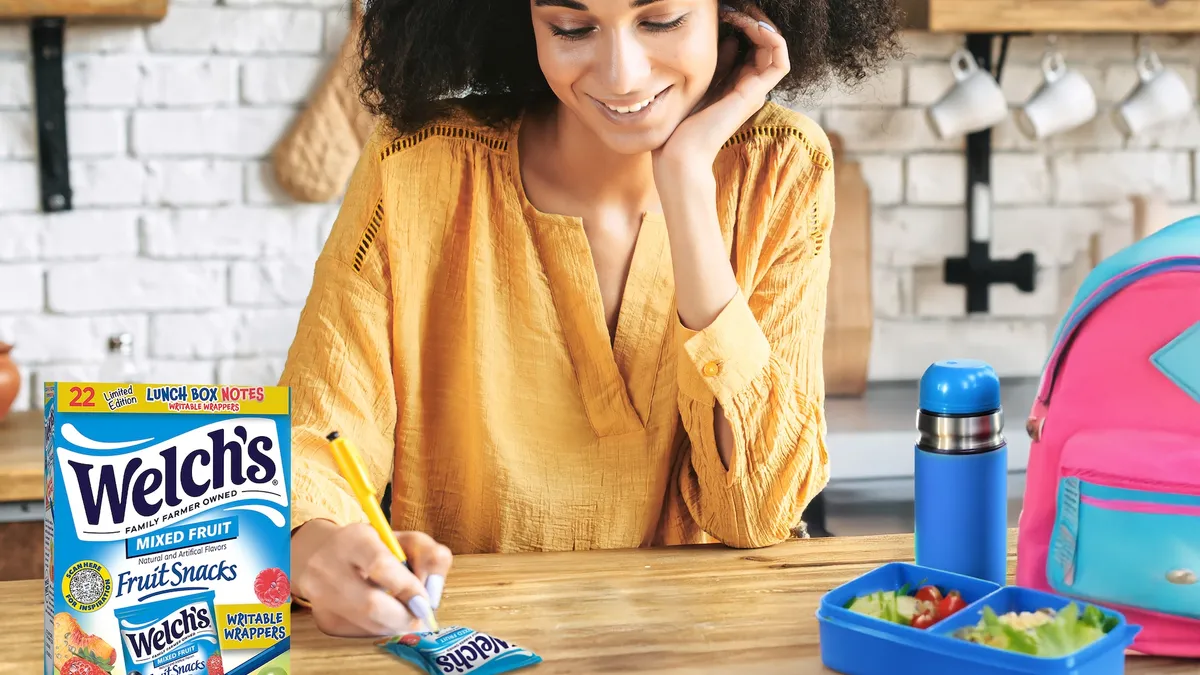The past two years have been marked by nonstop disruptions to the status quo, from the coronavirus pandemic and political strife to Russia's invasion of Ukraine. Now, consumers also face an inflationary cycle for the first time in decades, further complicating a fraught period for all parts of the global economy.
For brands looking to engage consumers amid inflation, the key will be reducing risks — not just increasing value — by focusing on the losses the economic phenomenon causes, according to "Inflation and Risk Reduction," a report by J. Walker Smith, Kantar's chief knowledge officer for North America.
"This moment in time is a little bit more about the broader dynamic of risk exposure in the broader context of volatility, and I think brands have an opportunity to be responsive to that," Smith said in an interview with Marketing Dive.
Inflation may be the latest in the long line of disruptions — and a novel one for many consumers — but research into consumer mindsets and examples from recent history show a way forward for agile, sophisticated brands.
How this disruption is different
While consumers have faced economic disruptions such as the recession caused by the 2007 financial crisis and the pandemic, many generations have never faced inflation, with the last such period happening from the late 1960s until the early 1980s. The disruptions of the last few decades have mostly caused unemployment, not inflation, which is expected to change how consumers respond to economic pressure.
This economic disruption comes amid a global mental health crisis, with anxiety at some of the highest levels measured, including three-to-four-times higher than previously measured in the U.S., Smith explained. Beyond straining wallets, inflation exacerbates the anxiety consumers are already struggling to deal with.
"People seem to be feeling a greater sense of risk exposure right now — not just the pressure of higher prices, but the feeling like the world is exposing them to more and more volatility, and more and more uncertainty," Smith said.
For consumers, inflation is more about those risks rather than the economic pressure itself. The Kantar report suggests value-based tactics should come as part of a strategy focused on addressing the loss of comfort, peace of mind, security and assurance that inflation causes. So while brands should do what they can about the price value of their products, Smith warns that they shouldn't remove value in a knee-jerk fashion, even in a moment when consumer prioritization intensifies.
"Think about ways you can add value back to your brands, so that people will put your brand or your category at the top of their priority list and look to save money elsewhere," he said.
What brands can do
Contrary to removing value, some brands have an opportunity to add value back to the marketplace during times of disruption. For example, Hyundai in 2009 introduced its "Assurance" program, which helped car-buyers get out of leases or car payments they could no longer afford due to job loss. The program helped Hyundai grow its business during the next few years, while the car industry as a whole declined. While something like an assurance plan doesn't apply to many categories, like CPGs, Smith suggests brand think outside the box.
"Don't assume that your only response to this inflationary moment has to be to cut prices. Think about ways in which you can add value as well, and that will then help you over the long run," he said.
Despite warnings to the contrary, advertising budgets are often the first thing to get cut during an economic downturn. Along with cautioning against removing value, Smith suggests that sustaining as much advertising as possible is critical, especially for name-brand products that don't fare well in price wars with store-brand products. Store-brand products make share gains, some of which persist after economic disruptions, and advertising is one of the ways name-brand products can minimize that initial share loss.
Apart from a price war, name-brand products can also benefit during a period of high uncertainty by marketers that properly leverage brand equity. This comes after a decade where big brands struggled to grow their toplines amid the growth of smaller brands.
"This is going to be a moment for big brands where people are going to say, 'Big brands give me the security'," he said. "Smaller brands are going to have a tougher time going forward unless they can figure out some way to act big in the marketplace."
"If we were talking to our clients about the macro context of the future, our bottom-line takeaway would be disruption is the new normal."

J. Walker Smith
Chief knowledge officer of North America, Kantar
No matter their size, brands must also continue tweaking their messaging to resonate with consumers whose plans for a return-to-normal are being upended by inflation, international war and continuing pandemic concerns. Consumers tired of Covid-19-related messages relatively early in the pandemic, a lesson that brands should remember.
Some brand campaigns have deftly navigated this challenge with savvy messaging. For example, Colgate in October 2020 unveiled the Colgate Optimism Project, turning data about consumer anxiety into an opportunity to offer not just oral care but positivity to the marketplace.
"This is all about trying to address the kinds of anxiety that people are feeling without the unsophisticated way of doing it, or just saying 'We know you feel bad, so brush your teeth, it'll make you feel better,'" Smith said.
As inflation is added to the growing list of consumer concerns, a marketing approach that weaves in addressing risk exposure could help future-proof brands.
"We do seem to be in a period of time where there's a lot more volatility than what we have experienced over the last two, three or four decades," Smith said. "If we were talking to our clients about the macro context of the future, our bottom-line takeaway would be disruption is the new normal."























